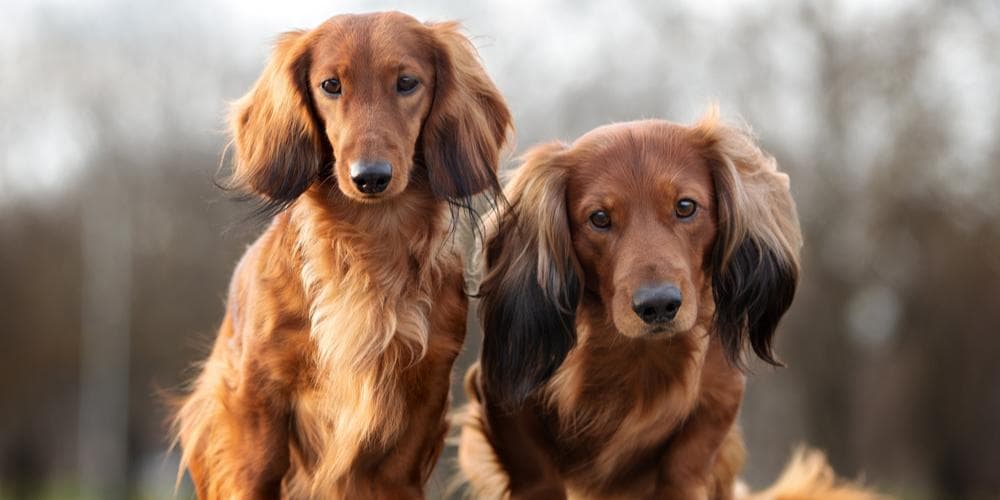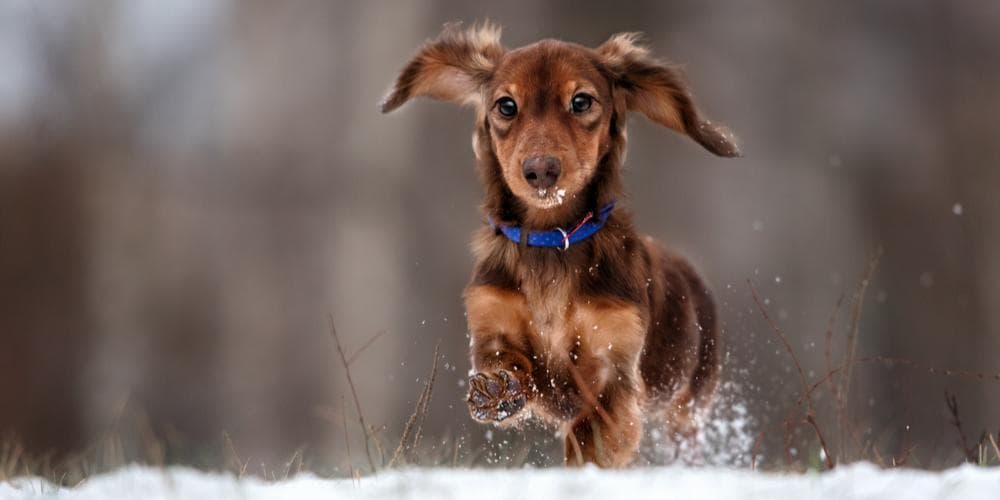When human parents say, “Oh, they grow up so fast,” they are referring to their children, but it actually takes many years for human children to become adults. However, when it comes to your baby doxie, they literally do grow up very fast!
In week one of a newborn Dachshund, they explore the world through smell and touch. Then in the following weeks, they open their eyes. Their ear flaps open. You can hear them bark. They start to stand, then walk and run. All of a sudden, your baby doxie has become an adolescent at around six months!
By this time, your puppy is probably getting into everything inside and outside the home. It means they are ready to explore their world, and they will need your help.
When your four-legged baby becomes an adult, it pays to know the various changes that will happen. This will not only prepare you for the adult life of your dog but also help them to have an efficient transition from puppyhood to adulthood.
Here are some of the few notable changes that you will most likely see in your dachshund as they enter their first year of life.
Dachshunds Reach Physical Maturity By The First Year
As your doxie reaches its first birthday, it should have already reached its full physical maturity. This means that your doxie’s skeletal system is fully developed and its muscles are now in their peak condition.
This also means that your Dachshund has a risk of developing IVDD, a devastating spinal health issue. Your adult dog would gradually stop growing physically and it is more likely that it stays in that short, but cute stature.
At this stage of its life, consider getting a dog ramp for your doxie. While dog ramps can be expensive, they cost far less than vet bills when your Dachshund suffers an injury. Dog ramps and car ramps help small dogs, especially doxies, by preventing them from jumping.
Dachshunds Reach Sexual Maturity By Six to 12 Months
Whether you like it or not, your doxie becomes sexually mature by the age of six to 12 months. If you have a male doxie, you would probably observe him pumping other dogs or even your legs. If you have a female doxie, you will see her start her menstrual cycle.
In this stage, you would normally consider spaying or neutering your dachshund. This helps you avoid unwanted puppies and keep your dog generally healthy.
Dachshunds Become Fully Coordinated By Their First Year
You may have remembered a time when your doxie was clumsy. It would suddenly trip over itself or roll over a hill. With your doxie’s fully developed body combined with his increased alertness and awareness of surroundings, he becomes more well-coordinated and balanced in movement.
When your dog is about to reach one year, you would notice it has become more intelligent and adventurous. It is this time you can start training your dog and teaching it more complicated tricks.
Behavioral Changes
What happens when your dog becomes hormonally charged, bigger, stronger, and smarter? Obviously, you would need to expect behavioral changes.
Dachshunds are known to be independent and strong-willed. Thus, you will notice that it will try to challenge your leadership time and time again. You need to be gentle and firm to reinforce your role as your four-legged buddy’s leader.
Biting is part of a dog’s nature. Your dachshund may show some level of aggressiveness to strangers and even to people with who they have already been familiar.
Remember the reasons dogs bite. They bite because they feel threatened and want to protect their territory. Sometimes, they bite as well when they are disturbed or startled. Thus, it is important to discuss this with your family especially the children.
Since adult doxies have suddenly developed a higher level of energy, they tend to exhibit destructive behaviors when they are bored. It is important to keep them active and give them plenty of opportunities to exercise.
Socialization should not also be forgotten. Adult dogs need stimulation. Expose your doxie to new experiences, things, sounds, people, and places. This should help your four-legged bestie to become more adjusted to its environment.
Food and Nutrition
Your dog starts to grow slowly at this time. In fact, since dachshunds are relatively smaller dogs, they stop growing at a much earlier stage. For this reason, you need to make sure you give an appropriate amount of food. Avoid overfeeding your doxie as this may lead to obesity.
Take Obie for example. He was one of the biggest Dachshunds in the world. At one point in his life, he weighed more than twice the size of an average doxie. Needless to say, he was put on a strict diet and is at a healthy weight now.
Final Thoughts
One of the best pleasures in life is to watch your beloved doxie grow up. You have the chance to observe how your four-legged buddy transitioned from being a puppy to an adult, from small to big, and from clumsy to skilled.
It is vital that you are with your doxie in every developmental stage. If you have questions, don’t hesitate to ask your vet.
Discussing your concerns with a dog expert and trainer will help you cope with the fast-paced growth of your Dachshund. Dog breeds have changed dramatically over the years and it’s good to understand how each breed is different from the next.
80% of Dogs Develop Arthritis or Joint Pain by 7 Years old – Here’s How to Protect Them
Most of us train our dogs when they are puppies to jump up on furniture. We think it’s harmless (and easier than always lifting them), but for dogs, couches and beds are very high compared to the size of their bodies.
Every time they jump it compresses their back and applies enormous force to their joints.
It’s no wonder that an incredible 80% of dogs experience arthritis or joint pain by only 7 years old.
Luckily, there is a vet-recommended solution.
It’s the PawRamp by Alpha Paw. An adjustable ramp that allows dogs to safely get on and off couches and beds. PawRamp makes joining you in bed or on the couch effortless and fun.
As a bonus, you can use code SAVE35 to get $35 off the PawRamp today.
















